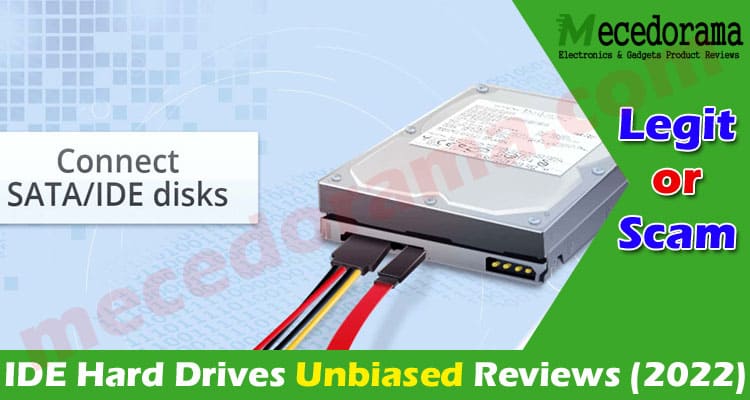IDE hard drives were prevalent decades earlier, but they are now outdated and no longer work. However, some people still use them for older machines. Because of this, a few problems have arisen that you should be aware of if you don’t know about them already.
The Evolution of IDE Drives
It all started in the early 1980s when personal computers were still in their infancy on the market. IBM released the first of their machines to compete with Apple, called the PC. It wasn’t long before other companies created their own personal computers that used similar hardware. These early hard drives had 40 or 80MB of storage space and were very expensive – you could easily spend more on a hard drive than what the whole computer would cost!
Around 1986, Western Digital released an ATA (Advanced Technology Attachment) interface to reduce costs. At first, it was very limited, with only 16-bit parallel signaling and no termination. In 1989, the ATA standard was upgraded to support faster speeds of up to 33MB/s and a 32-bit parallel interface that permitted software control of termination. This meant that ATA drives were no longer as expensive as they used to be and tripled the storage space.
In 1987, Toshiba released the first 2.5″ laptop hard drive, but it wasn’t until 1991 that they released a 5MB model intended for use in laptops.
In the early 1990s, IBM introduced the PS/2 line of PCs, which featured what became identified as “the baby AT” motherboard. This was made entirely of plastic, and it had a different type of IDE port than the prior one, which was much smaller. When the AT motherboard was retired in 1998, it was supplanted by ATA ports, which necessitated the proper connection of other connectors.
IDE drives have been phased out in favor of SATA drives. These offer significantly faster data transmission and increased endurance and storage capacity. But, on the other hand, these vintage IDE drives have a distinct quality about them, and your vintage PC will be inadequate without one.
IDE vs. SATA Comparison
The differences between IDE and SATA drives sometimes are misunderstood, but SATA technology is not just the modern upgrade to IDE drives. SATA stands for Serial Advanced Technology Attachment. SATA technology has evolved very much, and it’s still being upgraded today.
According to Tekeurope, a UK-based PC components, and spare parts specialist, the primary difference between SATA and IDE is that the former uses a serial data connection. In contrast, the latter uses parallel data transfer. Serial transfers are much faster than their paralleled counterparts; they can send more information in less time with fewer errors.
How to Determine if a Hard Drive Is IDE
The first thing you might notice about IDE drives is that they’re much smaller than today’s SATA units. Originally, the standard size was 3.5 inches; this represented approximately 9 centimeters and was intended to be used inside computers and other electronic devices such as stereos. However, as storage space needs increased, a 2.5-inch variant became available, which was particularly useful for laptop owners who needed to save space.
Putting in an IDE Drive
To install and set up an IDE hard drive, simply power it on and attach it to your computer via the HDD-to-Molex adapter. You should, however, check to see if any additional software or drivers are necessary for it to function properly. Maxtor IDE drives, for example, necessitate the use of special drivers, which are included in the installation disk.
You may also need to change your BIOS option that allows them to be used as main storage devices. This means that before you turn on your computer, you’ll need to set up these devices in the BIOS. You’ll get the dreaded ‘Bootmgr is Missing’ message if you mix these up.
Conclusion
Although IDE disk disks are no longer being used, collectors and enthusiasts continue to seek them out. Despite appearing weaker compared to modern SATA drives, they are an integral part of building a retro PC.
Also Read – Common Wiring and Electrical Issues: How to Fix Them!


